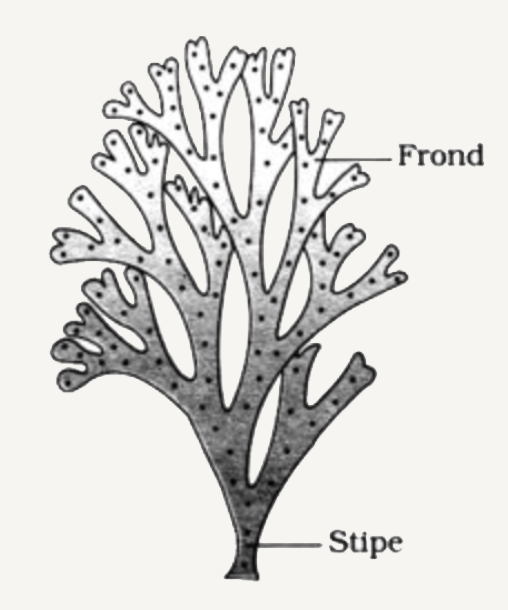Extenal coat composed of cellulose like materila occurs in
hemichordata
urochordata
cephalochoradata
cyclostomata
The correct Answer is:B
To solve the question "External coat composed of cellulose-like material occurs in," we will analyze the options provided: hemichordate, urochordate, cephalochordate, and cyclostomata.
1. Understanding the Options:
- Hemichordate: These are worm-like animals that do not possess an external coat made of cellulose-like material.
- Urochordate: Also known as tunicates, these organisms have an external coat that is indeed composed of cellulose-like material.
- Cephalochordate: These organisms do not have an external coat made of cellulose-like material.
- Cyclostomata: This group includes jawless fish and does not have an external coat made of cellulose-like material.
2. Eliminating Incorrect Options:
- Since hemichordates and cephalochordates do not have the external coat, we can eliminate these two options.
- Cyclostomata also do not have this characteristic, so it can be excluded as well.
3. Identifying the Correct Answer:
- The only group left is the urochordates, which are characterized by their external coat made of cellulose-like material. This coat is what gives them the name "tunicates."
4. Conclusion:
- Therefore, the correct answer to the question is urochordate.
Final Answer:
The external coat composed of cellulose-like material occurs in urochordates.
---
- Hemichordate: These are worm-like animals that do not possess an external coat made of cellulose-like material.
- Urochordate: Also known as tunicates, these organisms have an external coat that is indeed composed of cellulose-like material.
- Cephalochordate: These organisms do not have an external coat made of cellulose-like material.
- Cyclostomata: This group includes jawless fish and does not have an external coat made of cellulose-like material.
- Since hemichordates and cephalochordates do not have the external coat, we can eliminate these two options.
- Cyclostomata also do not have this characteristic, so it can be excluded as well.
- The only group left is the urochordates, which are characterized by their external coat made of cellulose-like material. This coat is what gives them the name "tunicates."
- Therefore, the correct answer to the question is urochordate.
The external coat composed of cellulose-like material occurs in urochordates.
Topper's Solved these Questions
- BIOMOLECULES(PROTOPLASM)Book:ALLENChapter:BIOMOLECULES(PROTOPLASM)Exercise:Exercise II
Explore 17 Videos
- BIOMOLECULES(PROTOPLASM)Book:ALLENChapter:BIOMOLECULES(PROTOPLASM)Exercise:Exercise III
Explore 23 Videos
- BIOMOLECULES(PROTOPLASM)Book:ALLENChapter:BIOMOLECULES(PROTOPLASM)Exercise:NCERT Based Problems
Explore 8 Videos
- BIOMOLECULE - IBook:ALLENChapter:BIOMOLECULE - IExercise:S
Explore 20 Videos
- BIOTECHNOLOGY : PRINCIPLES & PROCESSESBook:ALLENChapter:BIOTECHNOLOGY : PRINCIPLES & PROCESSESExercise:Question
Explore 57 Videos
Similar Questions
Knowledge Check
The reaction least likely to occur is :
AC6H5+HNO3H2SO4−−−→C6H5NO2BC6H6+H2SO4→C6H5SO3HCC6H6+Br2Fe−−→C6H5BrDC6H6+Cl2UV−−→lightC6H5Cl
Cellulose occurs in
View SolutionMaximum amount of cellulose occurs in
View SolutionCellulose digestion in ruminants occurs in
View SolutionBox like calcareous test occurs in
View SolutionRead the following features for brown algae a- Presence of pigments Chlorophyll a and c. carotenoids and xanthophyll (fucoxanthin), b- Cell wall is composed of cellulose, pectin and hydrocolloids like carrageen. c- Gametes are pyriform with two laterally attached flagella d-Stored food may be in form of laminarin or mannitol d- Deepest dweller
View SolutionHow many among among the given characteristics are true for th given organism ?

(I) Store food in the form of starch .
(II) The cell wall is composed of cellulose and align.
(III) Major photosynthetic pigments are chlorophyll a , chlorophyll d and phycoerythrin.
(IV) Biflagellate zoospores with two unequal laterally attached flagella.
(VI) They are usually grass green in colour.
(VII) These organisms range from simple branched forms as represented by kelps.
View SolutionAt which particular stage of chromosomes do errors like deletion of genes occur in an individual?
View Solution